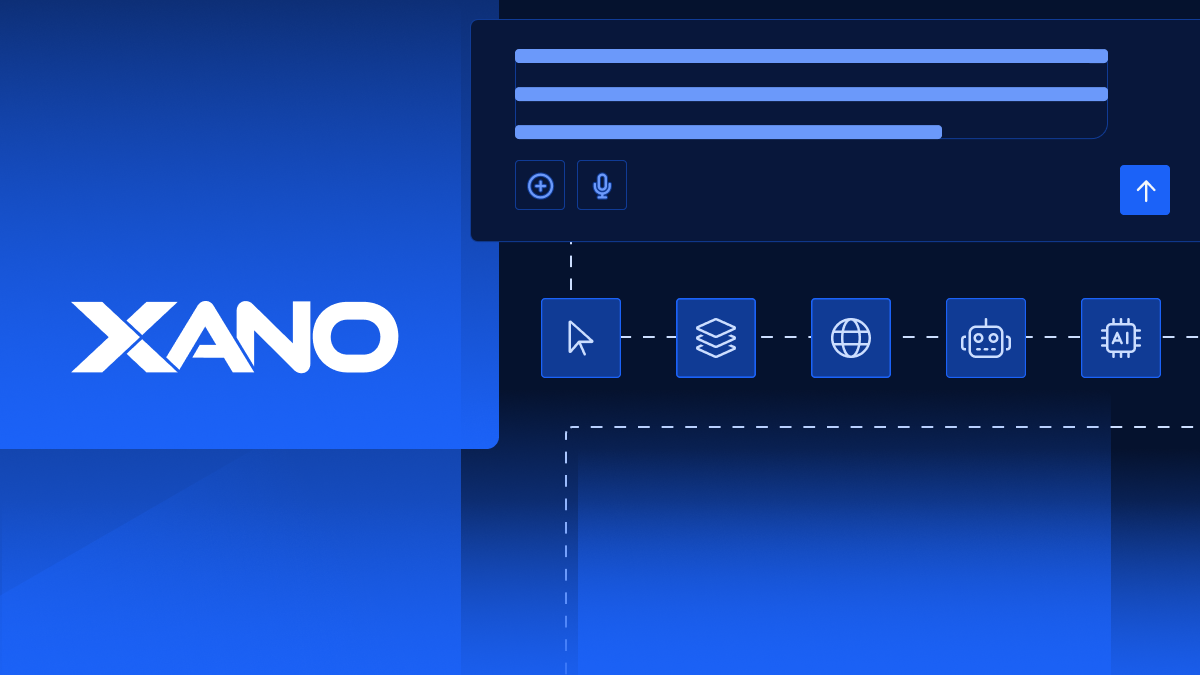The rise of AI-assisted development is changing how we build software. With tools that can generate code, design UIs, and even reason about product requirements, it's tempting to hand over the reins and let AI do everything. But if you’ve ever tried building a real application this way, you know one thing becomes clear fast: AI is only as good as the foundation you give it.
That’s why we believe in backend-first development—a modern, pragmatic approach where you start with your data model, APIs, and business logic before generating your frontend. When you're building with AI, this strategy is not just efficient—it’s essential.
(Once you're ready, of course, it's time to think about the frontend! And for that we recommend this breakdown of the top frontend builders.)
Why Backend-First?
AI is great at scaffolding UIs and wiring up components quickly. But what it can't do reliably—at least not yet—is define your business rules, structure your data, or make architectural tradeoffs. That’s your job. And that’s exactly where backend-first development shines.
Here’s why backend-first is the best approach for building with AI:
- You define the logic. Your backend is where your product’s core functionality lives. Start there, and you’re setting the rules of the game before AI takes the field.
- AI can move faster. Once your backend is in place, AI tools can auto-generate frontends, flows, and interactions with much greater accuracy—because the logic and data are already defined.
- Better collaboration. Frontend and backend work can now happen in parallel, with the backend acting as a single source of truth for AI and human developers alike.
- More secure and scalable. By handling your critical logic server-side first, you ensure better control, governance, and performance—without relying on AI to “guess” what matters most.
What It Looks Like in Practice
Let’s say you’re building a task management app. You could prompt an AI to create the whole thing—UI, backend, logic—but you’ll likely end up with spaghetti. Or worse: something that works, but can’t scale or evolve.
Instead, build your backend first:
- Define your data model (tasks, users, projects)
- Create your APIs (list tasks, create task, assign user)
- Add your business logic (permissions, notifications, due dates)
Now that your backend foundation is solid, the next step is choosing the right frontend builders. It can pull from your backend schema, auto-generate UI components, and even suggest flows—because it has something concrete to work from.
Check out this video to see just how quickly a frontend comes together once the backend is in place.
This Is the Future of Vibe Coding
The AI era is all about reducing the time between idea and execution. Backend-first development accelerates that process by giving AI clear constraints and structure. You’re not replacing developers—you’re amplifying them. And the best way to do that is by starting with the piece that matters most: the backend.
If you're serious about building real apps with AI—apps that scale, evolve, and reflect your business—build your backend first.
Of course, once you're ready for the frontend, there are lots of options to consider. Need help breaking them down from an expert who has tried them all? Here's a guide from NoCodeFinder on the top frontend builders.













